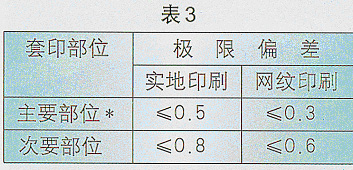Third, gravure printing failure and exclusion
   In gravure printing, besides being prone to fire, there are various kinds of failures, of which the more common failures and exclusion methods are as follows:
1 ink overflow: the phenomenon of ink full version of the part to produce spots, patterns, mainly due to the ink viscosity is too low, the ink is too large, the printing speed is low, the ink drying is too slow or static. The exclusion method is to add the original ink and the adjusting agent to increase the viscosity of the ink and reduce the flowability, and also to increase the printing speed or change the angle of the squeegee.
2 The ink is dried in the plate and embedded: the ink is dried too fast causing the ink to dry in the plate. Caused by the buried version of more reasons, such as large ink pigment particles, foreign matter mixed in, ink fixative poor re-inking, ink viscosity is too high, the printing plate ink hole is too shallow and so on. The elimination method is to reduce the drying speed of the ink, increase the amount of solvent of the ink, improve the re-solubility of the ink, remove the foreign matter, and reduce the viscosity of the ink. At the same time, the hot air of the drying device should be prevented from being blown onto the plate, causing the ink in the plate to dry.

The main area refers to the part of the screen that reflects the theme, such as patterns, text, logos, etc.
4 poor print gloss: adding the right amount of original ink can also be appropriate to improve the ink drying speed, replace the high-quality printing materials.
5 bad stacking color: The ink ink film that prints first has the ink discharging property, the reason that causes because the superposition color inks each ink viscosity does not match, the superposition ink uses the ink drying speed does not match. The viscosity of the ink can be reduced and the drying speed of the overlapping ink can be slowed down.
6 Anti-printing and stacking ink: The reverse side of the printed matter is stuck with ink due to stacking. The reason is the solvent in the ink, which contains a small amount of high-boiling components, which causes the solvent to evaporate too slowly. The plasticizer and plasticity resin in the ink Too much, the drying device is not good, the printing plate ink hole is too deep, and the relative humidity in the printing shop is too large. The method of elimination is to select a resin with good solvent release property, reduce the content of plasticizer and plastic resin in the ink, and add an anti-printing agent as appropriate. The solvent used in the ink should use a solvent with a narrow boiling range as much as possible. Improve drying equipment and increase drying efficiency. Use a roller with shallow ink holes and improve environmental conditions.
7 Scratches: The main cause of scratches on prints are squeegee damage, improper squeegee pressurization, incorrect squeegee angle, foreign matter in the ink, high viscosity of the ink, and strong ink adhesion. The pigment particles are too coarse and the plate cylinder has scratches, irregularities, poor corrections, and the like. The method of elimination is to use an ink containing no foreign matter, filter before using the remaining ink, adjust the viscosity, dryness, and adhesion of the ink, use a high-quality squeegee, adjust the pressure and angle of the squeegee, and correct the plate cylinder.
8 Ink hydration: Moisture in the air enters the ink, causing stickiness, precipitation of resin, gelation, etc., causing ink gloss reduction, reduced concentration, poor transfer, easy paste version and other ills. To avoid hydration, it is best not to use excessively quick-drying solvents and to reduce the chance of ink and air contact.
9 Whitening: The ink transferred to the surface of the plastic film is seriously degraded due to volatilization of the solvent, and the “whitening of resin†phenomenon occurs where the resin is insoluble, white turbid, and partially gelled. To prevent whitening, increase the printing speed, or close the drying oven, or use a solvent to slow down the ink drying speed.
This toy is a fun cat toy that integrates various functions such as educational cat toy, wheel windmill toy, wheel leaking food toy, free swinging cat stick and other functions. When the cat gently pushes the toy with force, the main body of the toy can rotate freely 360° in the horizontal direction, driven by the connecting rod.
Pet Runner Leaking Food Toy,Pet Leaking Dog Toy,Pet Leaking Cat Toy,Pet Leaking Food Toy
DongGuan Lucky Pet Products Co., Ltd. , https://www.dgpetproducts.com